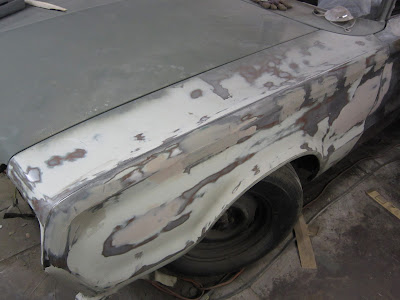Today we finally finished the coarse body work on the driver's side of the car. We did some final hammer and dolly work, filled and sanded some low spots, and finally we sprayed on the self etching primer.
 |
| The body work completed before the primer is applied. |
 |
| Now the primer is applied and has had time to dry. The worst side of the car has now been turned into the best side of the car. |




































